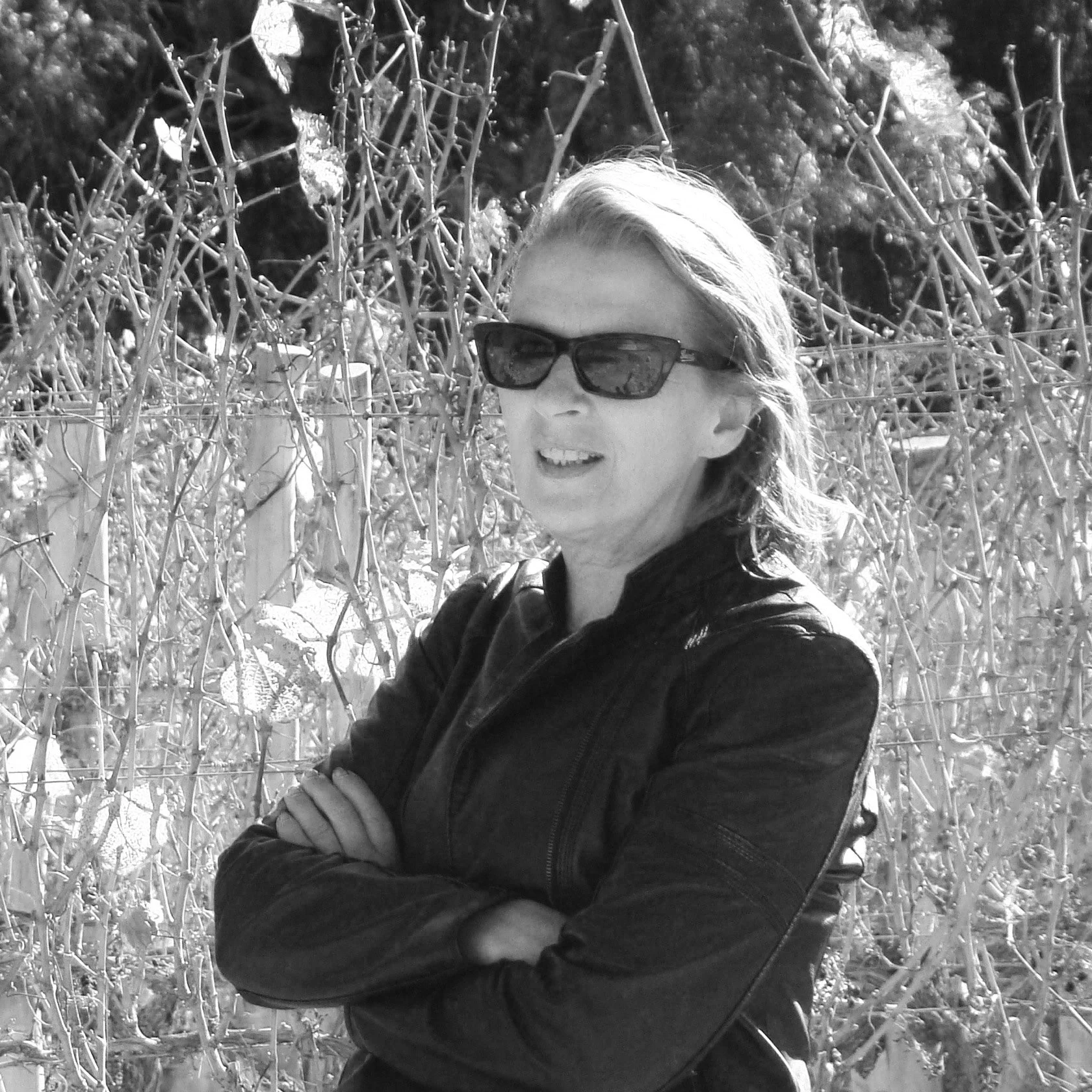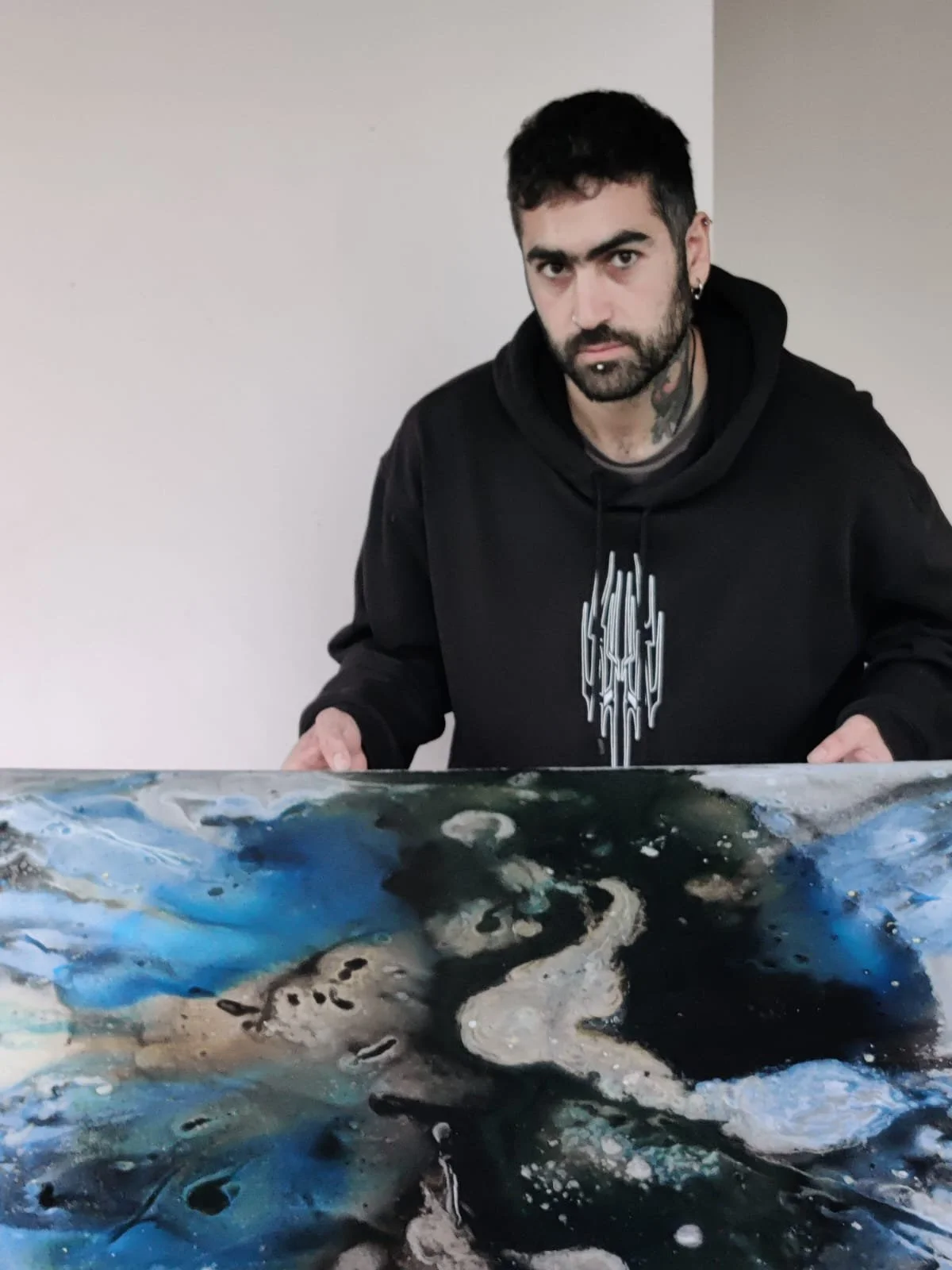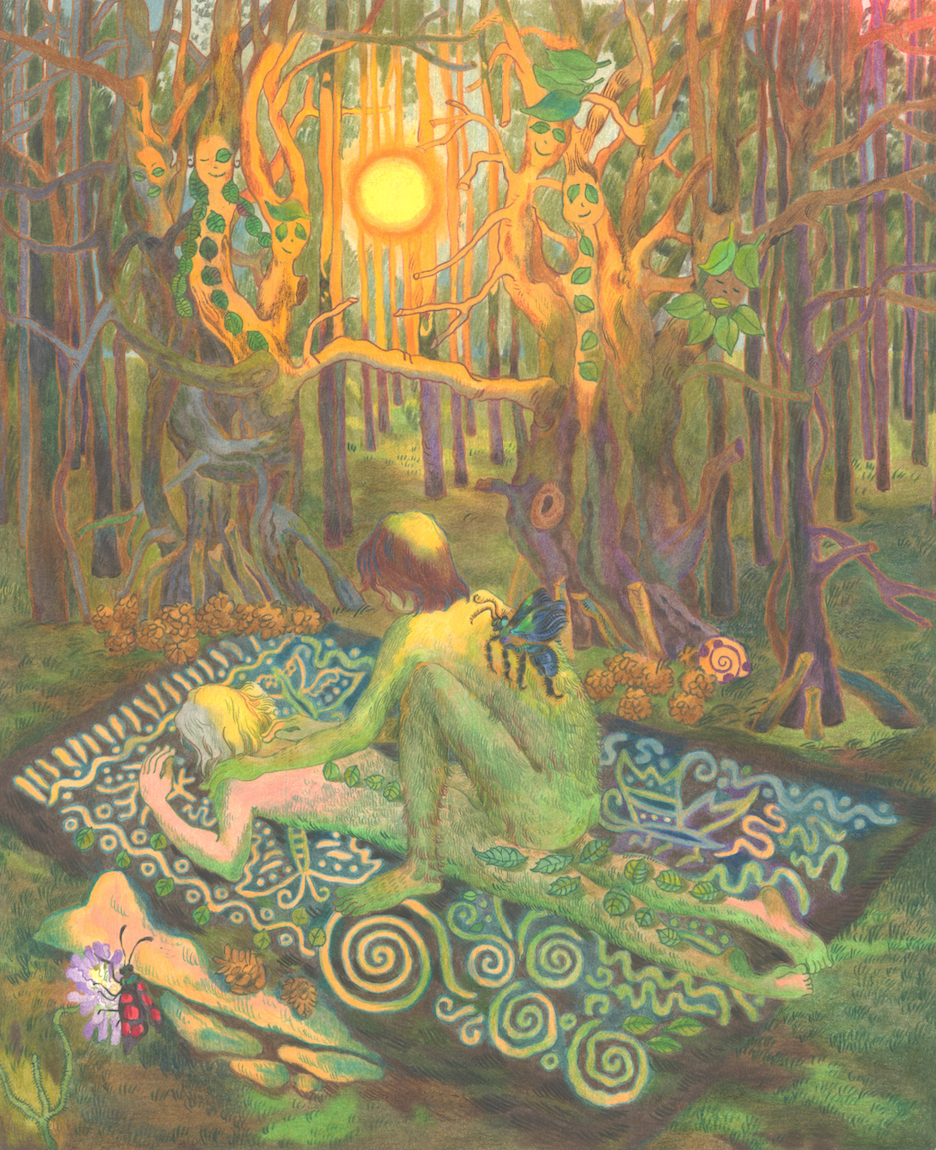10 Questions with Evelyne Chevallier
Al-Tiba9 Art Magazine ISSUE17 | Featured Artist
Evelyne Chevallier worked for 20 years in the photo field as a producer, head of the picture department, journalist, and iconographer. In 2010, after a trip to Northern Argentina, she decided to settle down there for a few years. Facing the Andes, she was fascinated by such powerful nature. But the solitude inherent to this life in the desert, plus the discovery of the local graffiti, pushed her to look for a loophole: digital collage was the solution. A work that has become a permanent job. Since 2012, she had shows in Argentina, Japan, and France. In 2014, she was an artist-in-residence in Montreal, Canada.
Evelyne Chevallier - Portrait
ARTIST STATEMENT
Evelyne Chevallier's photo collages started with graffiti, most of the time with sentences written by individuals on any walls around Jujuy in Argentina. Then of course, this hunt for words spread to all visited countries. Over the years, her digital collages went from very talkative to stripped-down, almost desert-like works, both literally and figuratively. As the amount of graffiti in the collages was reduced, more and more photos of exceptional Argentinian and Chilean landscapes appeared, and most of the time, they were also manipulated. Then came the period of diptychs, triptychs, and polyptychs. A resume of this work could be described as a permanent juxtaposition of two extremes: full and empty, talkative and silent, urban and nature, evoking somehow the yin and yang duality.
Apachetas, Digital photography, 30x40 cm, 2015 © Evelyne Chevallier
AL-TIBA9 ART MAGAZINE ISSUE17
Get your limited edition copy now
INTERVIEW
Let's start with your background. How did your experience in photo production and journalism influence your transition into digital collage?
Let's say that because of my background, I was ready to make pictures, not interfering in fields like wildlife or portraits that, in my opinion, require specific knowledge and talent. But taking pictures here and there just like anybody on holiday, before I found my main interest in local graffiti, was fine. Now, because of my studies in sociology that led me to journalism, and from there, my never-ending curiosity, I was quickly enough to become interested in the local graffiti as one of the best signs of this new Latin American culture. Graffiti, like music, is a universal language. It really speaks to everybody in all latitudes.
The transition to photo collage started the day that I went on foot to the village. I saw posters of Cristina Fernandez de Kirchner holding Nestor Kirchner by the shoulders with words saying: Love conquers Hate! (Cristina Kirchner was the actual president of Argentina, and Nestor Kirchner, her husband and ex-president of Argentina, had died a few months before.) This happened a year after my arrival in Argentina, so I had already collected a good number of photos. Photos of love and hate are the most common graffiti that I used to make my first photo-collage ever!
What initially drew you to Northern Argentina, and how did that experience shape your artistic journey?
I went to Argentina to visit my oldest closest friend, Nour, known there as the French of Tilcara, who built a hotel in the mountains 2 km from the village. When one goes far away on a trip, he knows he will not go back every day there, so he better take some pictures for souvenirs. But as instead of staying 3 weeks, I remained 6 months at first, I had plenty of time to start something, it happened to be my photo-collages.
Salar De Tara, Digital photography, 62x25 cm, 2020 © Evelyne Chevallier
Torn Sheet Of The Moon Valley, Digital photography, 100x30 cm, 2021 © Evelyne Chevallier
How did discovering local graffiti in Argentina inspire you to work with text in your photo collages?
It is a mix of both. 99% of my photo collages were started with a good sentence found on a wall somewhere in the area. What I search for is anything but street art. I look for graffiti as a voice of the people, as the initial meaning says: an inscription scribbled on a wall. And these inscriptions, whether political, poetical, or philosophical, are the starting point. The selection of landscapes, houses, or whatever is used as the background of the message. Together, they give a better idea of the local culture and the atmosphere, whether politically, sociologically, or sentimentally, as the majority of the messages deal with love issues.
Your collages evolved from "talkative" pieces filled with graffiti to more stripped-down, almost desert-like works. Could you tell us about this shift in your creative process?
Among the main reasons for the changes in my way of working was the slow disappearance of these scribbled messages. Street art has taken over. Maybe people will write less on the walls. In some areas, they are immediately erased. So, finding less and less my first source of inspiration, I worked more on what remained, and luckily enough, the outstanding landscapes around me are very inspiring. In Argentina, or the closest areas of Chile or Bolivia, called the Altiplano area, they are very deserted. So all the time, whether manipulated or not, my pictures are "desert-like work" because they reflect what I have in front of me!
Before the Storm © Evelyne Chevallier
How do you approach the blend of urban graffiti with vast natural landscapes in your collages?
Like evidence. Life is like that, made of full and empty, day and night, ying and yang. Opposites form a whole. Complexity is the essence of things. Nothing is only smooth or even.
What do you find most compelling about working with diptychs, triptychs, and polyptychs in your compositions?
If I could, I would add more pictures. I have to refrain from doing so. So far, I don't think I made polyptychs with more than six images. It is because I chose to present my work this way that I can pretend not to be a naturalist or landscape photographer. There are thousands of excellent photographers of this kind. I hope I can take a small step to the side.
Laguna Huancar 1 © Evelyne Chevallier
Your work often juxtaposes opposites, like urban vs. nature and talkative vs. silent. What motivates you to explore these dualities?
As I said before the complexity of life, of the society, of human beings. If I show you a picture of a landscape, you may think, well, she lives in the mountains. Then, if I show you a devil painted on a wall, you may consider there are religious rites around. And if I add a picture of a scribbled word denouncing the dictatorship, then you may guess that we are in Latin America!
How do the landscapes of Argentina and Chile continue to influence the emotional tone of your work?
Because immensity moves me. It started a long time ago in Ecuador, where I lived for 2 years, and it never went away. As an example, the altiplano is dotted with volcanoes; just thinking about it gives me goosebumps. The sea may provoke the same sensation. Facing such grandeur provokes a feverishness as much mental as physical. I don't know what to say, but taking pictures is possible. Taking pictures forces you to focus, so you concentrate and stay a longer time on the set. It is the opposite of taking a little walk and leaving as most tourists do.
Nandus Catamarca © Evelyne Chevallier
What new themes or locations are you excited to explore in upcoming projects?
Egypt and Sicily. I was there several times very recently and never worked on these pictures yet. I just started to make some compositions with both destinations.
Lastly, do you have any future exhibitions or residencies planned? What direction do you envision for your work?
Not really. It is difficult to work on your pictures and be your own PR at the same time. I do not have an agent or a gallery. This is a world that requires connections, and traveling all the time keeps you away from it. Then, a day came when I thought about focusing on being published, so I searched, and that is how I found Al-Tiba9!


























